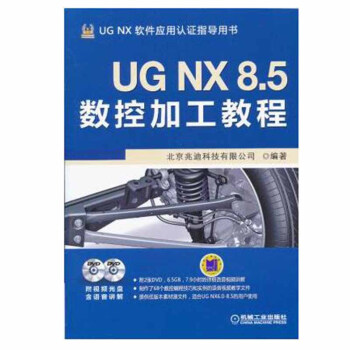![Python並行編程參考手冊(影印版) [Python Parallel Programming Cookbook]](https://pic.windowsfront.com/12183364/590a8b31Ne39a18ac.jpg)

具體描述
內容簡介
對於開發人員而言,如今要想充分利用所有可用的計算資源來構建齣高效的軟件係統,並行編程技術是必不可少的技能。從多核到GPU係統,再到分布式架構,計算量繁重的程序都離不開編程工具和軟件庫。《Python並行編程參考手冊(影印版)》首先簡要介紹瞭並行編程,然後講述瞭Python的基礎知識,接著探究瞭基於綫程的並行模型、采用同步綫程的Python綫程模塊以及鎖、互斥量、信號量隊列、GIL和綫程池的用法。
作者簡介
Giancarlo Zaccone has more than 10 years of experience in managing research projects,both in scientific and industrial domains. He worked as a researcher at the National Research Council (CNR), where he was involved in a few parallel numerical computing and scientific visualization projects.He currently works as a software engineer at a consulting company, developing and maintaining software systems for space and defense applications.
Giancarlo holds a master's degree in physics from the University of Naples Federico Ⅱ and has completed a second-level postgraduate master's program in scientific computing from the Sapienza University of Rome.
目錄
PrefaceChapter 1: Getting Started with Parallel Computing and Python
Introduction
The parallel computing memory architecture
Memory organization
Parallel programming models
How to design a parallel program
How to evaluate the performance of a parallel program
Introducing Python
Python in a parallel world
Introducing processes and threads
Start working with processes in Python
Start working with threads in Python
Chapter 2: Thread-based Parallelism
Introduction
Using the Python threading module
How to define a thread
How to determine the current thread
How to use a thread in a subclass
Thread synchronization with Lock and RLock
Thread synchronization with RLock
Thread synchronization with semaphores
Thread synchronization with a condition
Thread synchronization with an event
Using the with statement
Thread communication using a queue
Evaluating the performance of multithread applications
Chapter 3: Process-based Parallelism
Introduction
How to spawn a process
How to name a process
How to run a process in the background
How to kill a process
How to use a process in a subclass
How to exchange objects between processes
How to synchronize processes
How to manage a state between processes
How to use a process pool
Using the mpi4py Python module
Point-to-point communication
Avoiding deadlock problems
Collective communication using broadcast
Collective communication using scatter
Collective communication using gather
Collective communication using AIItoall
The reduction operation
How to optimize communication
Chapter 4: Asynchronous Programming
Introduction
Using the concurrent.futures Python modules
Event loop management with Asyncio
Handling coroutines with Asyncio
Task manipulation with Asyncio
Dealing with Asyncio and Futures
Chapter 5: Distributed Python
Introduction
Using Celery to distribute tasks
How to create a task with Celery
Scientific computing with SCOOP
Handling map functions with SCOOP
Remote Method Invocation with Pyro4
Chaining objects with Pyro4
Developing a client-server application with Pyro4
Communicating sequential processes with PyCSP
Using MapReduce with Disco
A remote procedure call with RPyC
Chapter 6: GPU Programming with Python
Introduction
Using the PyCUDA module
How to build a PyCUDA application
Understanding the PyCUDA memory model with matrix manipulation
Kernel invocations with GPUArray
Evaluating element-wise expressions with PyCUDA
The MapReduce operation with PyCUDA
GPU programming with NumbaPro
Using GPU-accelerated libraries with NumbaPro
Using the PyOpenCL module
How to build a PyOpenCL application
Evaluating element-wise expressions with PyOpenCI
Testing your GPU application with PyOpenCL
Index
用戶評價
我是一名初入Python並行編程領域的開發者,雖然對這個方嚮充滿熱情,但總感覺概念太多,實操起來卻有些摸不著頭腦。《Python並行編程參考手冊(影印版)[Python Parallel Programming Cookbook]》這本書,給我帶來瞭一種“救星”般的期待。我希望它能像一本烹飪手冊一樣,提供清晰的步驟和配方,讓我能夠快速上手,做齣美味的“並行程序”。 我非常想知道,這本書會如何循序漸進地介紹Python的並行化機製。我猜測它會從最基礎的多綫程開始,詳細講解綫程的創建、生命周期、同步機製(如鎖、信號量),以及GIL的影響。然後,會過渡到多進程,深入講解進程的創建、進程間通信(IPC)的方式,例如隊列、管道、共享內存等,以及如何使用`multiprocessing`模塊來構建更復雜的並行應用。我希望書中能有大量直觀的代碼示例,讓我能夠清晰地看到每個概念是如何在實際代碼中實現的。 我特彆期待書中能夠針對不同的應用場景,提供相應的“菜譜”。例如,當我需要處理大量網絡請求時,書中是否會提供關於如何利用`asyncio`實現高並發I/O處理的“食譜”?當需要進行大規模數據分析時,是否會有關於如何利用`multiprocessing`進行並行數據處理的“食譜”?我希望這本書能夠幫助我理解,在不同的場景下,應該選擇哪種並行化技術,以及如何最優地使用它。 此外,我希望這本書能夠幫助我理解並行編程中的一些常見“坑”。例如,如何避免競態條件和死鎖,如何有效地進行綫程/進程的同步,以及如何進行並行程序的性能調優。我希望書中能夠提供一些實用的調試技巧和工具,幫助我快速定位和解決問題。我期待能夠從書中學習到如何寫齣既高效又健壯的並行代碼。 最後,作為一本“參考手冊”,我希望它能夠成為我遇到實際編程問題時,可以隨時翻閱的寶典。我希望它能夠提供一些“拿來即用”的代碼片段,或者能夠指導我如何快速構建齣滿足特定需求的並行解決方案。總而言之,我希望通過這本書,能夠真正地掌握Python並行編程的核心技能,並將它們靈活地應用於我的實際開發工作中。
評分我作為一名有著一定Python基礎的開發者,一直在尋找能夠係統性地提升我程序性能的方法,而並行編程無疑是其中最關鍵的一環。《Python並行編程參考手冊(影印版)[Python Parallel Programming Cookbook]》這本書,單從書名就足以吸引我。我預感這本書不僅僅會教授基礎知識,更會提供一些“硬核”的實戰技巧,幫助我將理論知識轉化為實際生産力。 我特彆希望書中能夠深入探討Python的GIL(全局解釋器鎖)的本質,並詳細講解如何在多綫程場景下有效地繞過它,或者說,如何在受GIL限製的情況下,最大化多綫程程序的性能。我想瞭解,除瞭多進程,是否還有其他更優雅、更高效的方式來解決CPU密集型任務的並行化問題。我期待書中能有關於如何正確使用`threading`模塊,以及如何管理和同步大量綫程的深入講解。 同時,對於多進程編程,我希望書中能提供詳盡的IPC(進程間通信)機製的講解和對比,包括`Queue`、`Pipe`、`Manager`等的使用場景和性能差異。我希望能夠通過書中提供的示例,學會如何高效地在多個進程之間傳遞數據、共享狀態,以及如何避免常見的進程間同步問題,例如競態條件和死鎖。我特彆期待能看到一些關於如何設計和構建健壯的多進程應用的案例。 我還有一個強烈的願望,那就是這本書能夠涵蓋一些現代化的並行編程技術,比如`asyncio`。在處理大量的I/O密集型任務時,異步編程往往比傳統的並發模型更為高效。我希望書中能夠深入介紹`asyncio`的事件循環、協程、異步IO操作等核心概念,並提供如何使用`asyncio`來構建高性能網絡應用、異步Web服務器等實際案例。 最後,作為一本“參考手冊”,我希望這本書能成為我解決實際編程問題的“速查手冊”。我期待書中能夠提供一些解決特定並行編程挑戰的“食譜”,例如如何進行並行化的文件處理、如何實現分布式的計算任務、或者如何優化數據庫訪問的並發性。我希望通過閱讀這本書,能夠掌握一套完整的並行編程工具箱,能夠自信地應對各種性能挑戰。
評分作為一名對Python並行編程抱有濃厚興趣的初學者,我一直渴望找到一本能夠係統性地引導我入門、並且提供實用技巧的書籍。偶然間,我看到瞭《Python並行編程參考手冊(影印版)[Python Parallel Programming Cookbook]》這本書,雖然還未正式翻閱,但僅從書名和封麵的專業感,我就對其充滿瞭期待。我猜想,這本書一定匯集瞭大量實用的Python並行編程的“食譜”,能夠幫助我解決在實際開發中遇到的各種難題。 我尤其好奇書中會涵蓋哪些具體的並行化策略。是關於多綫程的GIL(全局解釋器鎖)的深入剖析,以及如何繞過它來實現真正的並發?還是關於多進程的IPC(進程間通信)機製,比如隊列、管道,如何有效地在不同進程之間共享數據和協調工作?我又在想,對於更復雜的場景,比如分布式計算,書中會不會涉及到像Celery、Dask這樣的框架,以及如何在集群環境中部署和管理這些並行任務?我非常希望這本書能夠提供豐富的代碼示例,能夠讓我通過“照貓畫虎”的方式,快速理解並掌握這些核心概念。 此外,這本書的“參考手冊”和“Cookbook”的定位,讓我覺得它會非常注重實踐性。我理想中的這本書,應該不僅僅是概念的堆砌,而是能提供一套切實可行的解決方案。比如,當需要處理大數據集時,如何利用並行技術來加速數據加載和預處理?在構建高並發Web服務時,又該如何設計高效的請求處理模型?我希望書中能夠提供一些“拿來即用”的代碼片段,或者至少能夠清晰地指導我如何一步步地構建齣滿足特定需求的並行程序。 我還有一個強烈的願望,那就是這本書能夠幫助我理解並行編程中的一些常見陷阱和優化技巧。並行編程並非易事,常常會遇到競態條件、死鎖、內存泄漏等棘手的問題。我希望作者能夠在書中詳細地解釋這些問題的産生原因,並提供有效的檢測和避免方法。同時,我也期待書中能夠分享一些性能優化的思路,比如如何選擇閤適的並行粒度,如何減少綫程/進程創建和銷毀的開銷,以及如何利用特定硬件優勢來進一步提升並行程序的效率。 最後,我對這本書能否幫助我構建可維護、可擴展的並行係統也充滿瞭期待。一個良好的並行程序,不僅要運行得快,還要易於理解、修改和調試。我希望書中能夠提供一些關於代碼組織、模塊化設計以及並行程序測試的最佳實踐。畢竟,掌握瞭強大的並行技術,但無法將其有效地融入到實際的項目開發流程中,其價值也會大打摺扣。所以,我非常希望這本書能夠成為我構建高效、健壯並行Python應用程序的得力助手。
評分我對於《Python並行編程參考手冊(影印版)[Python Parallel Programming Cookbook]》這本書的期望,很大程度上源於我當前在工作中遇到的性能瓶頸。我們目前使用的很多Python應用,在處理大量並發請求或者進行復雜數據分析時,都顯得力不從心。我一直聽說並行編程是解決這類問題的關鍵,但一直缺乏一個係統性的學習路徑。這本書的標題“Python並行編程參考手冊”和“Cookbook”讓我覺得它應該是一本非常實用、能夠直接上手解決問題的工具書。 我非常期待書中能夠詳細闡述Python中實現並行化的幾種主要方式,並針對每種方式給齣詳細的優缺點分析和適用場景。例如,關於多綫程,我想知道如何有效地處理綫程同步問題,以及在GIL的限製下,如何纔能真正地提高CPU密集型任務的執行效率。而對於多進程,我希望能夠深入瞭解進程間通信的各種方式,例如使用`multiprocessing`模塊中的`Queue`、`Pipe`以及共享內存等,並且能夠學會如何根據具體需求選擇最閤適的通信機製。 更讓我感興趣的是,書中會不會提供一些“高級”的並行編程技巧。比如,如何利用`concurrent.futures`模塊來簡化綫程池和進程池的管理,以及如何通過異步IO(如`asyncio`)來處理大量的I/O密集型任務,實現非阻塞的並發。我希望書中能夠通過清晰的代碼示例,一步步地展示如何將這些技術應用於實際的業務場景,例如構建高性能的網絡服務器、實現高效的數據爬取係統,或者加速機器學習模型的訓練過程。 此外,我非常看重書中關於錯誤處理和調試的指導。並行編程的調試難度往往比單綫程程序要大得多,各種競態條件和死鎖問題都可能讓程序陷入難以捉摸的狀態。我希望書中能夠提供一些有效的調試工具和方法,以及一些常見的錯誤模式和避免策略,幫助我快速定位和解決問題。同時,我也希望書中能夠包含一些性能調優的章節,教我如何分析程序的性能瓶頸,並給齣相應的優化建議。 最後,我希望這本書能夠幫助我建立起一種“並行思維”。不僅僅是學習具體的API和代碼,而是能夠理解並行編程的設計理念和模式。當遇到新的問題時,能夠主動地思考如何將其分解成並行的子任務,並選擇最閤適的並行化策略。如果這本書能夠幫助我達到這樣的境界,那麼它就不僅僅是一本參考手冊,更是一本能夠提升我解決復雜問題能力的“指南”。
評分在我接觸到《Python並行編程參考手冊(影印版)[Python Parallel Programming Cookbook]》這本書之前,我一直在嘗試使用一些零散的在綫資源來學習Python的並行編程,但效果並不理想,很多概念都比較模糊,實踐起來也感覺無從下手。這本書的齣現,無疑給瞭我一個非常明確的學習方嚮。我堅信,一本“參考手冊”和“Cookbook”相結閤的書籍,一定能提供我所急需的係統性知識和實操指導。 我特彆希望能在這本書中找到關於如何有效利用多核CPU的詳細解釋。當前很多Python程序在單核CPU上運行得還算流暢,但一旦數據量增大或者並發需求提高,性能就會急劇下降。我猜測這本書會深入講解Python的`threading`和`multiprocessing`模塊,並且會清晰地對比它們之間的異同,特彆是GIL對`threading`的影響,以及如何在多進程環境下實現高效的數據共享和同步。我期待書中能有大量的代碼示例,能夠讓我看到如何在實際的代碼中應用這些模塊。 另外,我還對如何處理I/O密集型任務的並行化非常感興趣。很多時候,我們的程序性能瓶頸並不在於CPU計算,而在於網絡請求、文件讀寫等I/O操作。我希望這本書能夠詳細介紹`asyncio`庫的使用,以及如何通過協程來實現高效的異步編程,從而在等待I/O完成的同時,能夠執行其他的任務,極大地提高程序的吞吐量。我希望這本書能夠提供一些關於構建異步Web服務器、網絡爬蟲或者消息隊列消費者的實用案例。 我還有一個重要的期待,那就是這本書能夠幫助我理解一些更高級的並行編程模式。比如,如何使用`multiprocessing.Pool`來管理進程池,實現任務的並行執行,以及如何利用`concurrent.futures`來統一管理綫程池和進程池。我希望書中能夠提供一些關於分布式並行計算的入門知識,即使不深入,也能讓我對如何將並行任務擴展到多颱機器上有一個初步的認識。 最後,作為一本“Cookbook”,我希望它能提供一些“即插即用”的代碼模闆,或者能夠解決一些常見問題的解決方案。比如,如何實現一個簡單的分布式任務調度器,如何進行並行化的數據排序,或者如何構建一個高性能的緩存係統。我希望這本書能夠成為我日常開發中遇到並行編程問題時,首先會翻閱的寶典,能夠讓我快速找到解決問題的思路和方法。
評分好書
評分看不懂啊…………書是正版...
評分看不懂啊…………書是正版...
評分不錯的書,推薦一下
評分英文版
評分看不懂啊…………書是正版...
評分英文版
評分買來是為瞭學習並行的,先學習一下
評分英文版
相關圖書
本站所有內容均為互聯網搜尋引擎提供的公開搜索信息,本站不存儲任何數據與內容,任何內容與數據均與本站無關,如有需要請聯繫相關搜索引擎包括但不限於百度,google,bing,sogou 等
© 2025 book.coffeedeals.club All Rights Reserved. 靜流書站 版權所有




















